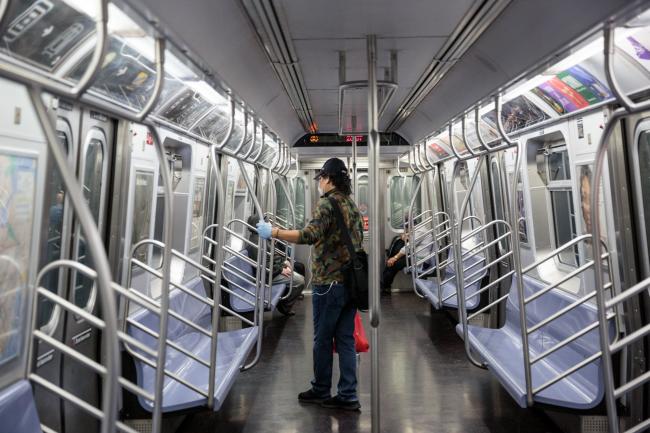(Bloomberg) -- The shock of Friday’s U.S. jobs report is still rippling through economic circles, politics and financial markets.
The 2.5 million increase in payrolls and decline in the unemployment rate -- albeit to a still-sky-high 13.3% -- confounded expectations for another sharp deterioration in both measures.
Beyond how economists flubbed the forecasts, the report has spurred many other questions, from how to reconcile the figures with jobless-claims numbers showing about 9 million more claiming unemployment insurance benefits, to what to make of a recurring data-collection issue by the Labor Department, to how many jobs the federal Paycheck Protection Program actually saved.
Below, we try to answer some of these questions:
Wait, so is the real unemployment rate 16%?
Kind of. As the Bureau of Labor Statistics detailed, survey-takers misclassified a lot of people -- around 5 million -- as employed but absent from work, rather than unemployed on temporary layoff. If you counted those people as unemployed, the jobless rate would have been about 3 percentage points higher on an unadjusted basis -- or about 16%.
The April report said the unemployment rate would have been almost 5 percentage points higher -- or approaching 20%. So both of these statements are true: the rate fell in May, and the real (unofficial) unemployment rate was higher than the given figure in both months.
The jobs report showed 21 million Americans unemployed, but the weekly jobless claims report said 30 million are claiming continuing unemployment benefits in all programs. What gives?
It’s not actually 21 million, even though that’s the official number. If you adjust the figures for the misclassification detailed above, the true number of unemployed is closer to 26 million or 27 million, according to Nick Bunker, an economic research director for the jobs website Indeed.
OK, so we’re still off by 3 million or 4 million. What explains the rest of the gap?
There are several possibilities.
First, many states have waived the requirement that one be searching for work to be eligible for unemployment benefits. Yet, if people aren’t searching for work, the BLS doesn’t typically count them as unemployed -- instead they’re considered “not in labor force,” with such outsiders still numbering 6.7 million people more than before the pandemic. Workers expecting to be recalled from temporary layoff are counted as unemployed whether or not they have engaged in a specific job-seeking activity.
Another potential culprit is that many of the self-employed and gig workers who are out of work and on the new federal Pandemic Unemployment Assistance benefits -- 10.7 million people as of the week ended May 16 -- are being classified as something other than unemployed, according to Betsey Stevenson, a University of Michigan economist and former U.S. Labor Department chief economist.
“It’s difficult to say how they would be coded in the BLS survey, but I would count them as on temporary layoff,” Stevenson said. “But given the drop in unemployment and the numbers that the BLS survey is capturing, my guess is that many of the 10.7 million were not counted as unemployed.”
Is it possible that the BLS survey wasn’t fully representative of the population?
Yes. While it’s true that the response rates for both the establishment survey -- which produces the payroll number -- and the household surveys were lower than their pre-pandemic levels, the BLS said both surveys met standards for accuracy and reliability.
Still, Stevenson said the low response rates “could cause problems because they are unlikely to be a random sample of people who are missing. If they are different in important ways that aren’t visible in the data, then the BLS would not have been able to adequately compensate for them.”
What about the ADP (NASDAQ:ADP) report, which said businesses cut 2.8 million jobs?
Many economists discount the ADP figures -- based on the payroll company’s customer records -- as an unreliable predictor of the government’s jobs report, typically coming two days later. But Mark Zandi, chief economist at Moody’s Analytics, which compiles the ADP report, said the ADP number actually provides a better representation of the reality of the May job market as of the BLS survey week than the BLS number itself.
In fact, a Federal Reserve research paper from 2019 found that pooling the BLS payroll numbers and a series derived from ADP could come closer to the true state of employment. So it’s possible that the truth for May was somewhere in between the ADP and BLS numbers.
So, what really happened in the labor market in May?
Probably two things, assuming the BLS’s snapshot matches reality: an unusually large number of people being recalled or hired, and an unusually large -- but smaller -- number of people losing their jobs.
“We saw a tremendous amount of churn,” said Erica Groshen, a former BLS commissioner appointed by President Barack Obama.
Economists may have in particular underestimated the number of people rehired under the PPP aid program. Holly Wade, director of research and policy analysis at the small-business group National Federation of Independent Business, said a mid-May survey of members found that 73% said they rehired or retained workers specifically due to PPP.
Groshen also cautioned that the weekly jobless claims figures produced by a different agency in the U.S. Labor Department, while relevant, aren’t necessarily directly comparable as an indicator with the monthly employment surveys produced by the BLS.
In any case, even with some improvement in May, the unemployment rate remains extremely high -- much higher than any rate seen in the Great Recession -- and economic activity is nowhere close to where it was pre-pandemic.
“The U.S. labor market, while showing some signs of bouncing back from the coronavirus shock, is still in a pretty dire spot,” Indeed’s Bunker said.
©2020 Bloomberg L.P.

